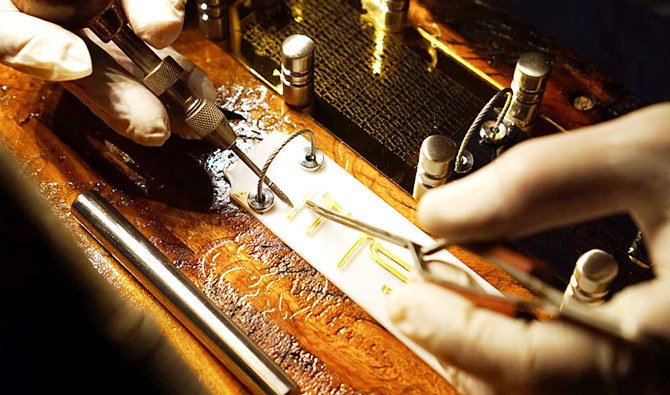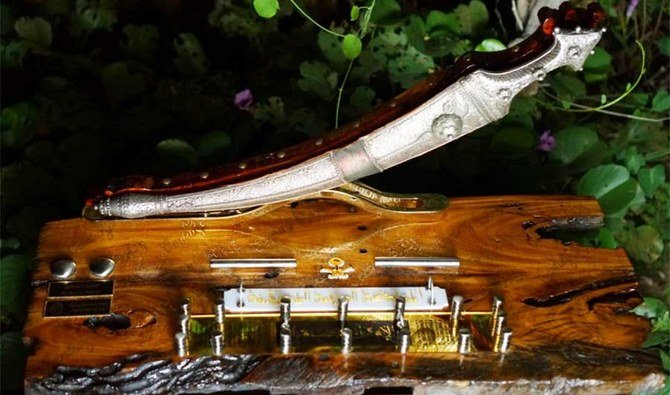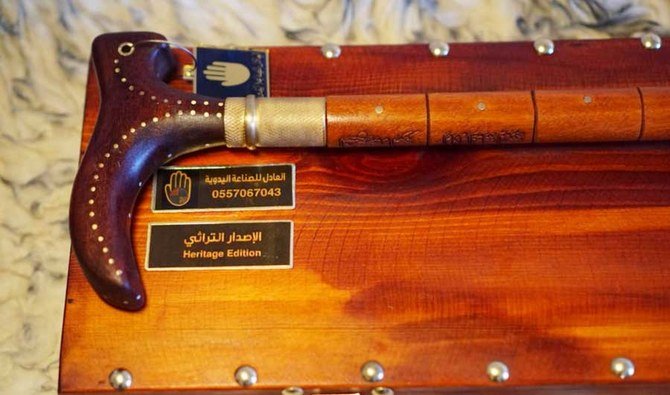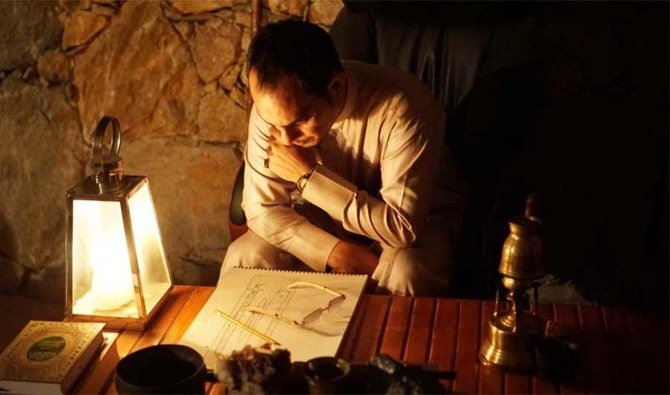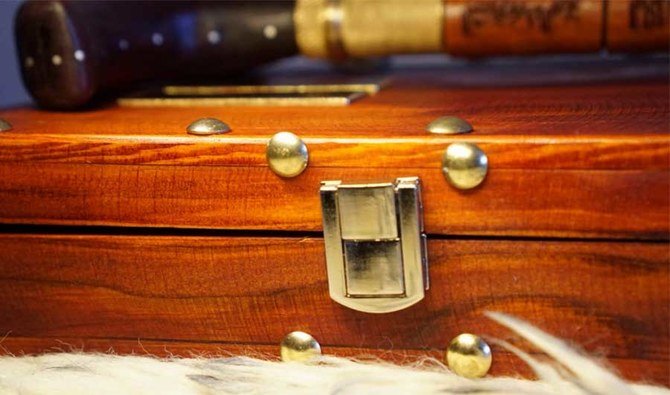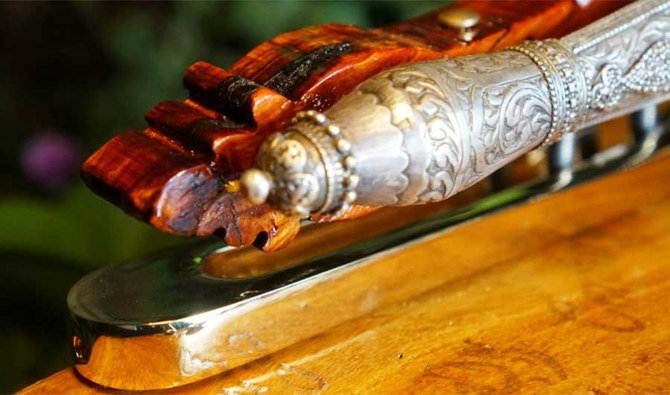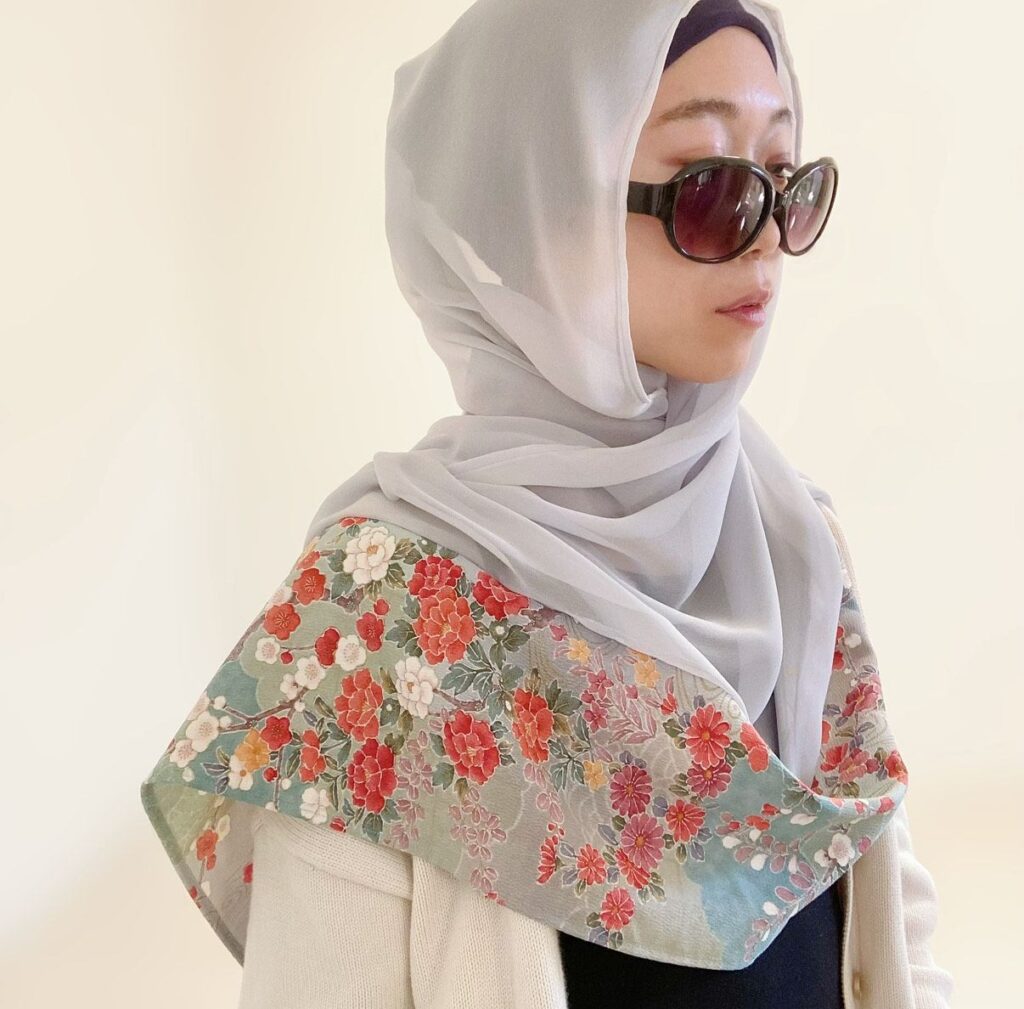MAKKAH: A young Saudi in the south of the Kingdom is bringing back the timeless craft of hand carving wooden canes with a new look to suit modern tastes, driving demand from Hajj pilgrims and online customers from around the world.
Walking canes have always been associated with the elderly and ill, and usually comprise simple designs that focus more on function rather than appearance.
That association has prompted Adel Al-Shehri to give the concept a new life by bringing back an old craft and turning canes into famous statement pieces used by Saudis.
Through his work, he can convey the cultural and historical essence of Saudi Arabia by engraving cultural designs on sidr wood.
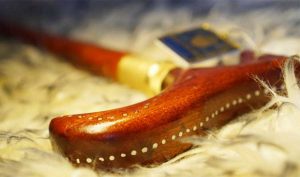
Al-Shehri grew up in the southern mountain ranges of the Kingdom and uses the old indigenous tree to create unique intricately designed canes just as his forefathers once did.
The sidr tree, known as Christ’s thorn jujube, is an evergreen species that is a deep-rooted part of the culture. It can be used in medicine and also in the construction of canes and wooden objects found in many homes in the south of the Kingdom.
He told Arab News that he inherited from his ancestors a love of artifacts, such as shiny swords and jambiyas, a type of dagger with a curved blade. Growing up surrounded by architecture adorned in stones and wood, Al-Shehri said that he wanted to bring the rich history of design back using a product found right in his backyard.
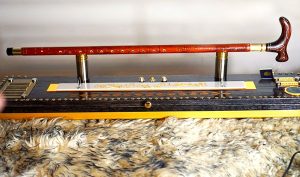
“Visitors to Saudi Arabia are constantly on the hunt for souvenirs, swords, or canes. However, shipping swords is a real problem, because they are considered white weapons. Meanwhile, some items lose quality or are damaged during shipping. This is why I shifted my entire focus to making canes,” he added.
Al-Shehri said that while carrying out his Hajj pilgrimage, he used his cane as a “crutch,” engraving his name on it. Soon after, he decided to use the phrase “Made in Saudi Arabia” and focus on the Umrah and Hajj seasons to introduce the product as a souvenir that could be carried back home by pilgrims. Al-Shehri said that some Hajj institutions even reached out to give out his canes as gifts at the end of pilgrimage tours.
The canes I create are enough to stop importing canes that neither accentuate our identity nor highlight our intellectual and cultural message.
Adel Al-Shehri
He said that many people from across the world have requested their canes through Hajj institutions or on social media.
Most recently, he added, a German citizen requested four canes with different designs inspired by Saudi culture, but some customers request personalized canes or ones that are specifically customized to illustrate a memory.
Al-Shehri said that the canes he designs are delivered in handmade luxurious boxes that serve as a masterpiece to be displayed in a customer’s home. He described the cane as a “sign of prestige, warmth, and hospitality.”
The first thing that caught his attention as a child was how his family stores their ancient swords, guns, and jambiyas — all wrapped in ornate fabrics and stored in old boxes.

Adel Al-Shehri
Al-Shehri had always wanted to put this heritage in the limelight and share it with other Saudi cities. The public’s broad praise of his initial work was the first building block in his dream toward producing his canes. He stressed that he often uses sidr wood for the canes because the diameter must be more than 40 centimeters.
For the wood fibers to grow, the sidr must also be dried for six months. “The handle is made from the core of sidr wood so that it could bear the grafting, which sometimes may reach a thousand grafts inside,” Al-Shehri said. With no educational experience, his drive to create such masterpieces taught him to push through and learn the craft with time and patience. “The manufacturing stages became an inspiration and taught me the ins and outs of this creative craftsmanship, which shaped the features of my personality and led me towards worlds of magic and beauty,” he said.
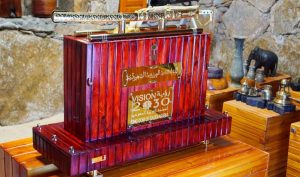
“I was first concerned with the metal lathe and mastering its unique way of manufacturing accessories and adding wood to them. I then focused on the element of touch and adding luster in the absence of real manufacturers in this field. I insisted on mastering the metal lathe myself so I would not have to depend on anyone else. My workshop, filled with nickel, chrome, stainless steel, and brass, along with the metal and wood lathes, became my best friend.
“I work for hours on end to meet the various requests, especially if a customer places an order for a special occasion with a tight deadline,” he added.
Al-Shehri said that what he and many other craftsmen in the Kingdom do promotes the Saudi culture and is a sign of pride in the Saudi identity. “The canes I create are enough to stop importing canes that neither accentuate our identity nor highlight our intellectual and cultural message.”



